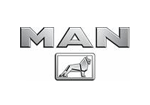PHP Generator for MySQL online Help
| Prev | Return to chapter overview | Next |
Range edit
The range input (so-called slider) is useful for imprecise number input. It is possible to indicate the allowed range of values in the appropriate dialog window (default values are 0 and 100 for bottom and top limits accordingly). Live demo.

Max width
Use this property to restrict the maximum width of the editor (this means that in any screen resolution editor's width will be less or equal then the property value). Can be specified in any units supported by web browsers e.g. 300px, 25em, 50%, etc.
Step specifies the legal number intervals for the input field. When an end-user presses a spin button, the value is incremented or decremented by this amount. The default value is 1.
To limit end-user input to a specified range, turn ON the Use constraints option and define the editor's minimum and maximum allowed values.
Inline styles
Use this field to set formatting options to be used inside the style attribute of the element. For example, to set the font color and the background color for a control, place the following string to Inline styles:
color: red; background-color: yellow;
Custom attributes
This property allows you to add simple metadata to individual elements, largely for the purpose of providing information to make JavaScript functions easier. Such attributes can be later handled in client-side events. For example, to add several custom attributes to an editor, enter the following string into the Custom attributes edit box:
data-city="Boston" data-lang="js" data-food="Bacon"
It is recommended to prefix all custom attributes with data- to keep the result document compatible with the HTML5 requirements.
| Prev | Return to chapter overview | Next |





 Download
Download Buy
Buy